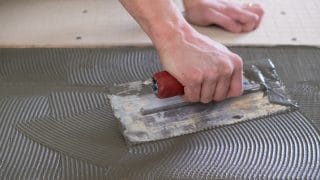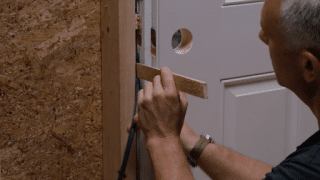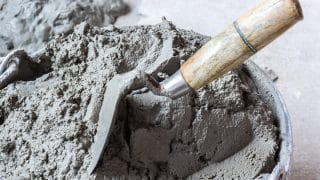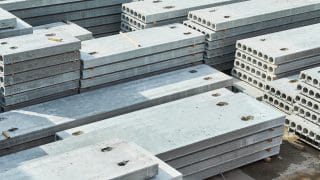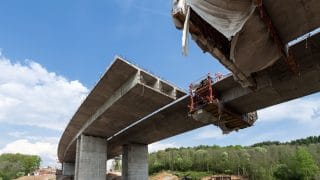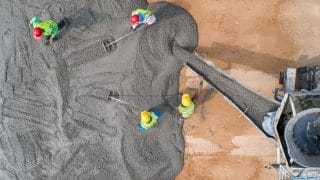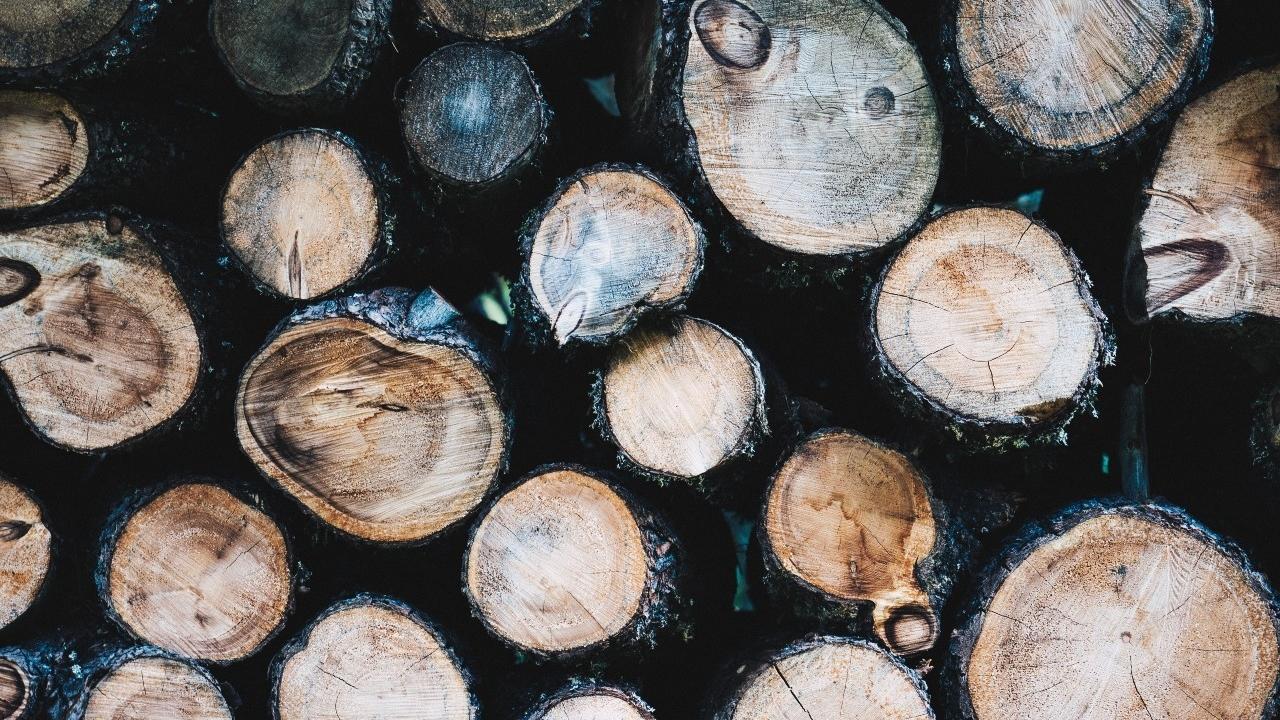
Wood was one of the first materials ever used and it is certainly one of the longest standing. There’s evidence that homes built more than 10,000 years ago used wood as their primary construction material. But for such a well-known umbrella term, it has hundreds of varieties, classifications, and grades that make some woods better than others for certain projects.
Understanding the types of wood, their properties, and their applications is crucial for builders. And once you understand the main types of woods, learning how they are graded will help you select the right one for your project (and fight overwhelm at the lumberyard).
Finally, understanding the components of wood strength, such as hardness, density, compression strength, bending strength (or Modulus of Rupture), and specific gravity will help you choose among the many options you might encounter for a project.
What are the three main types of wood?
Builders refer to hardwood, softwood, and engineered wood for construction projects. Of course, only two of these—hardwood and softwood—are natural, or “solid,” woods. Engineered wood is a manufactured material that contains wood product, as well as additives such as adhesives or resin. Here is a rundown of these three types of wood:
Hardwood
Hardwoods are angiosperm trees, or plants that produce seeds with a covering. They’re fertilized by birds and insects that carry the pollen to other trees, and when they’re fertilized, the trees form fruits, nuts, or seeds.
In general, hardwood trees are deciduous, which means that they lose their leaves annually. They tend to grow more slowly than softwoods, so they are usually denser. In construction, we use hardwoods for projects that might be exposed to the elements or that need to last. Think: decks, flooring, beams, paneling, and high-quality furniture.
Common characteristics of hardwoods
- Slower growing than softwoods
- Generally durable and less likely to decay than softwoods
- Low sap content, which increases its fire resistance
- Have a broad, flat leaf (as opposed to coniferous or needled tree)
- Often (but not always) higher in density than softwoods
- Produce a seed with a covering
Hardwood species
Some of the most common species of hardwoods in North America include:
- Walnut: One of the most common woods used for furniture in the United States, walnut is a versatile wood because of its dimensional strength and shock resistance. Its density varies from medium to somewhat lightweight. You’ll find it in cabinetry projects, but it’s also used in high-end furniture and flooring.
- Maple: Maple wood is native to Asia but is also found in Europe, North America, and North Africa. It is a good choice for furniture, flooring and millwork, because it is moderately hard, but very strong and resists splitting. The grain pattern is close and generally straight.
- Oak: There are more than 600 species of oak recorded around the world. The most common in lumberyards are red oak and white oak; both varieties have straight grains and visible growth rings. A popular option for cabinets, furniture, flooring, moldings, and paneling, it’s hard and strong and also resistant to fungal attack.
- Birch: Birchwood is widely available and affordable—and is closely related to oak, but harder. Because of its hardness and stability, it’s often used for cabinets, seating, interior doors, and turned objects.
- Cherry: the wood of the cherry fruit tree, cherrywood is a light pinkish brown when it’s freshly cut and darkens to reddish brown color over time. It is a flexible wood with a smooth grain, so ideal for furniture pieces. It is also used for veneer, cabinets, interior millwork, and specialty items like musical instruments.
Learn all about the properties of wood and how wood is used in construction in the MT Copeland course on Wood Materials. Taught by professional builder Jordan Smith, the course covers topics that range from I-joists to shear strength.
Softwood
Softwood trees are gymnosperm trees, which reproduce by forming cones whose pollen is spread by the wind to other trees. Pollinated trees form what are known as “naked seeds,” which drop to the ground or are spread by the wind and grow elsewhere.
These trees usually have needles and cones, so you’ll recognize them as conifers such as spruce or pine trees. Other examples of softwood trees include cedar, Douglas fir, juniper, redwood, cypress, and larch.
Because they grow more quickly than most hardwoods, most softwoods have a lower density than most hardwoods—and are therefore easier to cut. They’re also generally less expensive to harvest. Because softwoods can be soft and light and take a nail easily without splitting, they can be great for general construction.
Still, softwoods don’t take their name from the quality of softness. It is true that some varieties of hardwood are extremely hard, but in fact, the three softest woods recorded are also technically hardwoods. When we talk about softwood, we’re making the distinction about its mode of reproduction only—and within the category, allowing for generalizations.
Wood was one of the first materials ever used and it is certainly one of the longest standing. There’s evidence that homes built more than 10,000 years ago used wood as their primary construction material. But for such a well-known umbrella term, it has hundreds of varieties, classifications, and grades that make some woods better than others for certain projects.
Understanding the types of wood, their properties, and their applications is crucial for builders. And once you understand the main types of woods, learning how they are graded will help you select the right one for your project (and fight overwhelm at the lumberyard).
Finally, understanding the components of wood strength, such as hardness, density, compression strength, bending strength (or Modulus of Rupture), and specific gravity will help you choose among the many options you might encounter for a project.
What are the three main types of wood?
Builders refer to hardwood, softwood, and engineered wood for construction projects. Of course, only two of these—hardwood and softwood—are natural, or “solid,” woods. Engineered wood is a manufactured material that contains wood product, as well as additives such as adhesives or resin. Here is a rundown of these three types of wood:
Hardwood
Hardwoods are angiosperm trees, or plants that produce seeds with a covering. They’re fertilized by birds and insects that carry the pollen to other trees, and when they’re fertilized, the trees form fruits, nuts, or seeds.
In general, hardwood trees are deciduous, which means that they lose their leaves annually. They tend to grow more slowly than softwoods, so they are usually denser. In construction, we use hardwoods for projects that might be exposed to the elements or that need to last. Think: decks, flooring, beams, paneling, and high-quality furniture.
Common characteristics of hardwoods
- Slower growing than softwoods
- Generally durable and less likely to decay than softwoods
- Low sap content, which increases its fire resistance
- Have a broad, flat leaf (as opposed to coniferous or needled tree)
- Often (but not always) higher in density than softwoods
- Produce a seed with a covering
Hardwood species
Some of the most common species of hardwoods in North America include:
- Walnut: One of the most common woods used for furniture in the United States, walnut is a versatile wood because of its dimensional strength and shock resistance. Its density varies from medium to somewhat lightweight. You’ll find it in cabinetry projects, but it’s also used in high-end furniture and flooring.
- Maple: Maple wood is native to Asia but is also found in Europe, North America, and North Africa. It is a good choice for furniture, flooring and millwork, because it is moderately hard, but very strong and resists splitting. The grain pattern is close and generally straight.
- Oak: There are more than 600 species of oak recorded around the world. The most common in lumberyards are red oak and white oak; both varieties have straight grains and visible growth rings. A popular option for cabinets, furniture, flooring, moldings, and paneling, it’s hard and strong and also resistant to fungal attack.
- Birch: Birchwood is widely available and affordable—and is closely related to oak, but harder. Because of its hardness and stability, it’s often used for cabinets, seating, interior doors, and turned objects.
- Cherry: the wood of the cherry fruit tree, cherrywood is a light pinkish brown when it’s freshly cut and darkens to reddish brown color over time. It is a flexible wood with a smooth grain, so ideal for furniture pieces. It is also used for veneer, cabinets, interior millwork, and specialty items like musical instruments.
Learn all about the properties of wood and how wood is used in construction in the MT Copeland course on Wood Materials. Taught by professional builder Jordan Smith, the course covers topics that range from I-joists to shear strength.
Softwood
Softwood trees are gymnosperm trees, which reproduce by forming cones whose pollen is spread by the wind to other trees. Pollinated trees form what are known as “naked seeds,” which drop to the ground or are spread by the wind and grow elsewhere.
These trees usually have needles and cones, so you’ll recognize them as conifers such as spruce or pine trees. Other examples of softwood trees include cedar, Douglas fir, juniper, redwood, cypress, and larch.
Because they grow more quickly than most hardwoods, most softwoods have a lower density than most hardwoods—and are therefore easier to cut. They’re also generally less expensive to harvest. Because softwoods can be soft and light and take a nail easily without splitting, they can be great for general construction.
Still, softwoods don’t take their name from the quality of softness. It is true that some varieties of hardwood are extremely hard, but in fact, the three softest woods recorded are also technically hardwoods. When we talk about softwood, we’re making the distinction about its mode of reproduction only—and within the category, allowing for generalizations.
Common characteristics of softwoods
- Faster growing than hardwoods (and for that reason, often less expensive)
- They grow tall and straight, which makes it easy to cut dimensional lumber
- Come from conifers, which have needles and cones
- Pollinated trees form “naked seeds,” which are spread by the wind
- Often (but not always) lower in density than hardwoods
- Absorb adhesives and stain quickly
- Lower resistance to fire than hardwood
Softwood species
Some of the most common species of softwoods in North America include:
- Spruce: Spruce is strong and moderately hard, and can be used as a construction lumber, for making crates, and millwork. Because it’s lightweight, it’s a great wood for ship masts, aircraft, and ladders. It has a fine grain that runs straight.
- Pine: There are many species of pine, such as lodgepole pine, eastern white pine, pitch pine and scot pine, and it’s one type of wood that is extremely common in North America. Pine has a yellow color, which varies to light brown and pale yellow. It’s a versatile wood, which can be used for making construction lumber, doors and windows, furniture, moldings, and for other uses. It has straight grains with growth rings that are visible as dark brown lines.
- Cedar: Many people know cedar because it is high aromatic, and its smell is thought to repel pests and moths, so it’s a popular wood for lining closets and storage chests. Red cedar is the common name for the cedar species found throughout the eastern United States. It has a hard texture, but the wood is lightweight, with straight grains and knots. It is considered to be rot resistant and can withstand outdoor weather, so it’s a good choice for decks, patio furniture, fencing, and decorative siding.
- Redwood: Redwood trees are indigenous to the Pacific United States and can grow to more than 300 feet tall. The best quality redwood comes from the heartwood—the dense inner part of the trunk. It contains a chemical inside its pores that makes it resistant to insects, weather, and rot. It is a premium building wood because it will last much longer than most types of wood when exposed to the elements.
- Fir: Douglas fir is known for its strength and performance, which is why it’s a great choice for woodworking and construction. It has the highest modulus of elasticity value of all the North American softwoods, which means that the wood resists deforming under a load. It’s stable and holes nails well, which makes it easy to work with.
Engineered wood
When most people discuss the two main types of wood—hardwood and softwood—they’re talking about the two main types of natural wood, also referred to as “solid wood.” Engineered wood, or wood that is manufactured, is considered a third type of wood.
Engineered boards are often made from the waste wood of sawmills, and are treated through chemical or heat processes to produce wood that meets size requirements that are hard to find in nature. In other words, they’re generally made from the same hardwoods and softwoods used to manufacture lumber, but mixed with additives like adhesives.
They’re used in a variety of applications, from home construction to commercial buildings to industrial products.
Types of engineered wood
Here are some popular examples of engineered woods and their applications:
- Plywood: A material manufactured from thin layers (or “plies”) or wood veneer that are glued together. Plywoods have several benefits to builders, since they are made by binding resin and wood fiber sheets to form a composite material whose “cross graining” property provides dimensional stability and makes the strength of the panel consistent in all directions.
- Oriented strand board: This type of board is formed by combining wood strands or flakes with adhesives and then compressing them. It is manufactured in wide mats and is good for load-bearing applications such as flooring and roof decking.
- Medium density fiberboard (MDF): MDF is made by breaking down hardwood and softwood pieces into fibers, which are combined with wax and resin binders, and formed into panels by applying high temperatures and pressure. It is usually more dense than plywood, and is stronger and more dense than oriented strand board.
- Composite board: This engineered wood term includes MDF and oriented strand board. It refers to a wood engineered with both plastic content and wood fiber that has been extruded and heated. It’s also known as engineered wood. It is easy to install, cost-effective, and good for incorporating into sustainable design, since it can be made of recycled material using fewer trees.
- Cross-laminated timber (CLT): This wood panel product is made from gluing together layers of solid sawn lumber. It is strengthened by layering each board perpendicular to the next and glued on the wide faces of each board. The thicknesses of the panels can easily be increased, which makes it a design-flexible material. It can be a good insulator, since it’s made of multiple layers of wood.
MT Copeland offers video-based online classes that give you a foundation in construction fundamentals with real-world applications. Classes include professionally produced videos taught by practicing craftspeople, and supplementary downloads like quizzes, blueprints, and other materials to help you master the skills.


